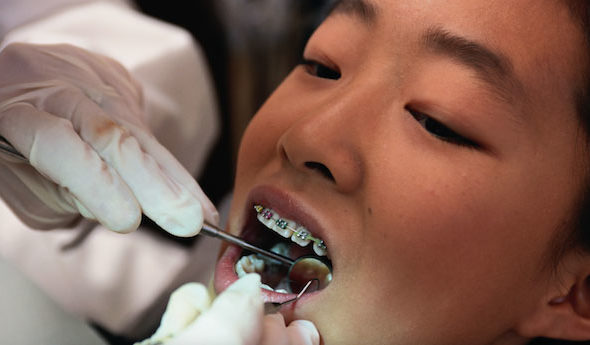“What’s the difference between a dentist and an orthodontist?”
Orthodontics is a highly specialised branch of dentistry that addresses problems related to the alignment of the teeth and jaws. As such, it is of course closely related to the field of general dentistry, but the very specific problems with which it deals at the same time somewhat sets it apart. Therefore, orthodontists do not usually perform general dental procedures (such as fillings, extractions, whitening, etc.), but are instead highly-trained specialists whose qualifications and skills enable them to address a wide variety of structural problems associated with the teeth and jaws, such as crowded teeth, underbite, impacted teeth, as well as many other conditions.
The very specialised nature of the work that they do therefore means that orthodontists are required to undertake specialist studies above and beyond those which are required to practise as a general dentist. As well as completing a 5-year Bachelor of Dental Surgery degree, an orthodontist is also required to complete a 3-year Masters degree/Doctorate in Orthodontics. In addition, in order to practise in Australia, an orthodontist must be registered as a Specialist in Orthodontics by the Australian Health Practitioner Regulation Agency (AHPRA).
Furthermore, orthodontists in Australia should also be members of the Australian Dental Association (ADA) as well as the Australian Society of Orthodontists (ASO), the peak body for all practitioners in this country, and which promotes high ethical standards and continued professional education for members through the Australasian Orthodontic Board (AOB).
This specialised training and professional regulation, as well as the fact that they have experience in dealing with the full range of orthodontic conditions, means that orthodontists are acknowledged as the most-qualified practitioners to deal with the diagnosis, prevention and treatment of any problems associated with the alignment of teeth and jaws (known technically as malocclusion, which literally means ‘bad bite’).
As specialists, a patient requiring treatment from an orthodontist does not require a referral from a general dentist. However, for many patients a referral from their dentist is the first step in receiving orthodontic treatment, and so they can rest assured that their orthodontist will work in close consultation and partnership with their family dentist. An experienced orthodontist will consider their role to be part of a team dedicated to a patient’s dental well-being, and so will always keep a patient’s dentist fully informed of any work or procedures being undertaken.
Therefore, while orthodontics is a distinct, specialist branch of dentistry that deals with very specific conditions and problems, the work of an orthodontist supports the role that family dentists play, and so the two professions can be seen very much as working in partnership.
This article was written and distributed by Cadogan and Hall, a team of freelance writers based in Adelaide, South Australia. We specialise in producing online content, websites, blogs, articles and press releases for small- and medium-sized businesses.
www.cadoganandhall.com enquiries@cadoganandhall.co







